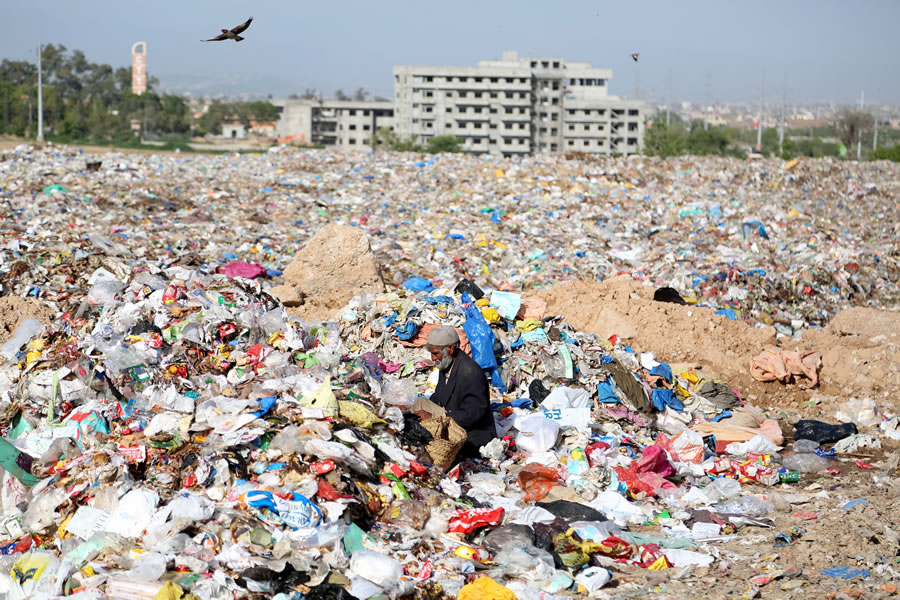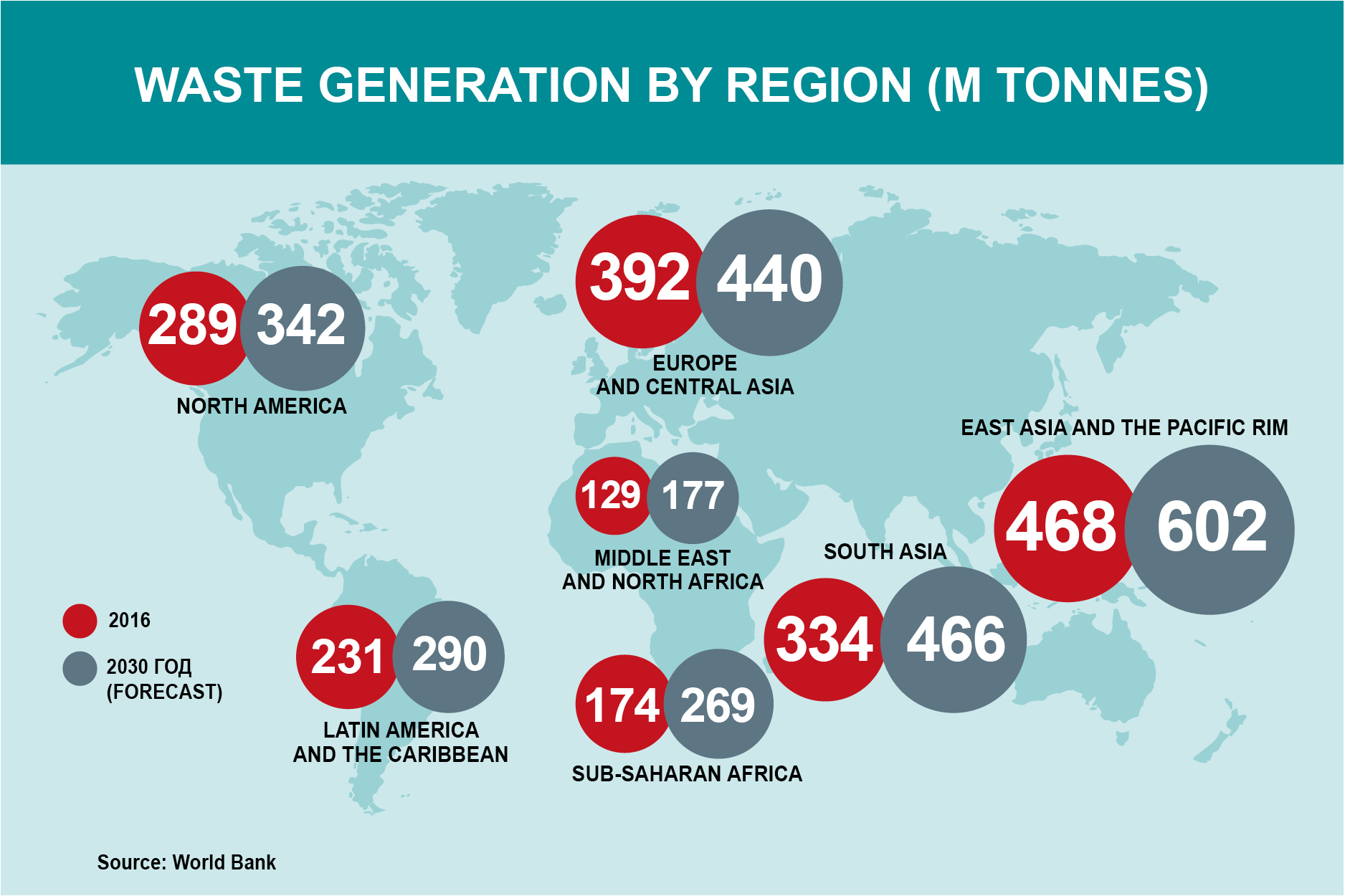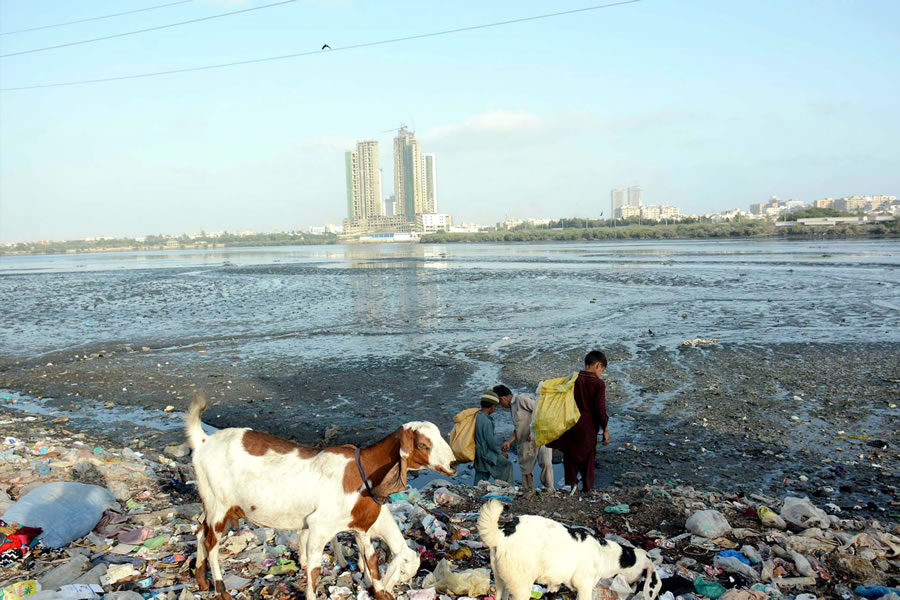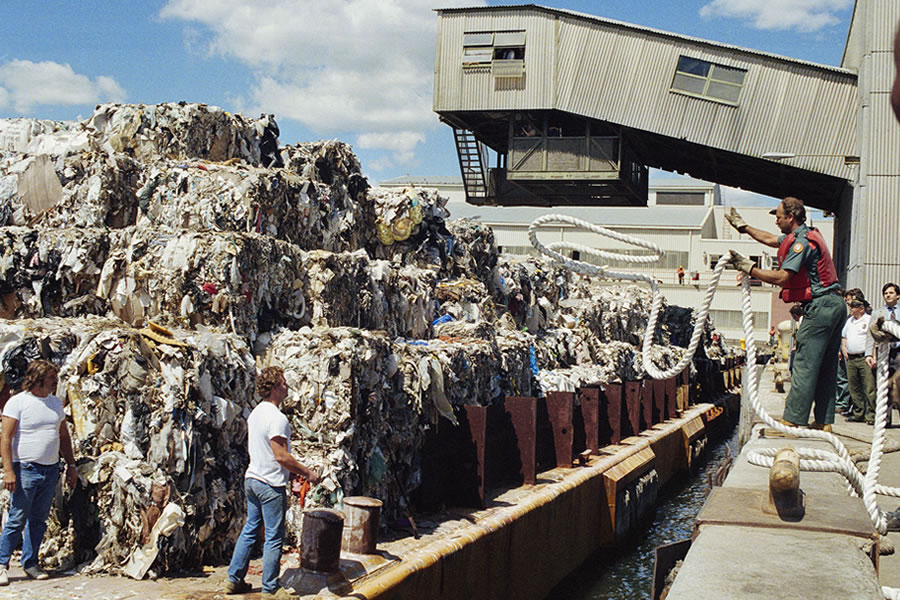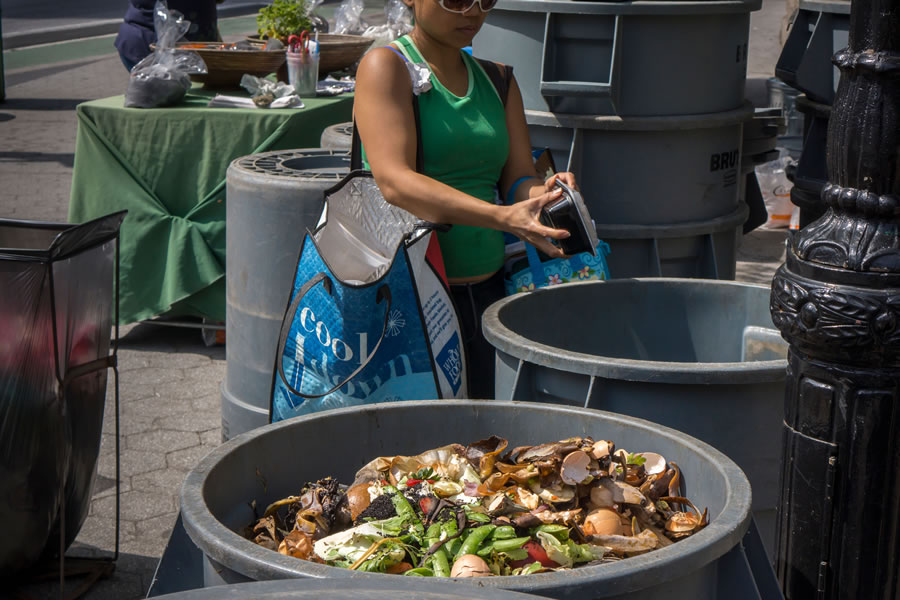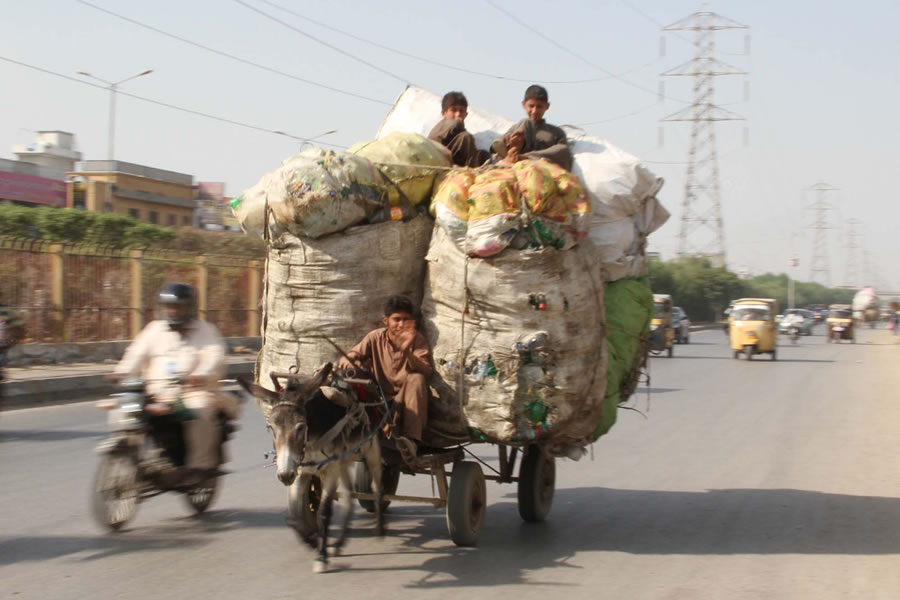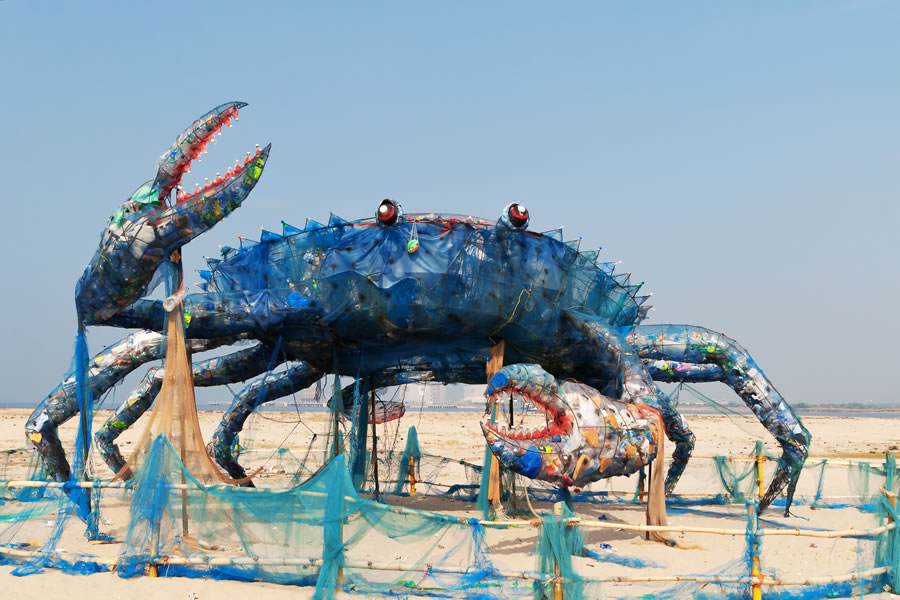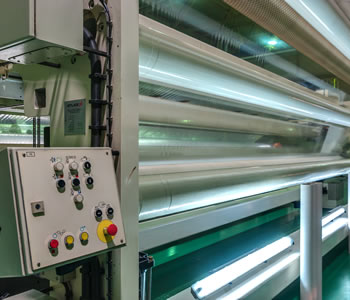Developing countries are catching up with industrialised economies in terms of waste generation, and they are increasingly reluctant to accept the developed world's waste for disposal. Together with the rest of the planet, they are slowly but surely becoming more environmentally conscious, gradually changing their waste management practices. However, it is not going to happen overnight: this process stretched over several dozen years in the US and Europe.
Recycling in the workplace
In the heart of Taipei City, the capital of Taiwan, sits the company called Miniwiz seemingly engaged in the development of digital products. However, the impression is deceptive: the company’s office is full of empty plastic bottles, compact discs and other modern waste all neatly sorted and put into garbage bags.
In the developing countries, recyclable materials are in high demand fr om locals.
In fact, Miniwiz makes money by turning waste into high-performance materials. The chairs in the company’s conference room are made fr om plastic bottles, beverage cans, and even shoe soles. Office glass mugs, the symbol of modern recycling, once were broken iPhone screens. The founder of Miniwiz studied in the USA. It was where he wanted to start his company before finding out that unlike Taiwanese, Americans people are not so enthusiastic about recycling.
Today, only 13% of waste is recycled (on a rather discriminatory basis: for example, the USA recycles two thirds of all aluminium cans and only 10% of all plastic bottles).
Taiwan recycles 44% of household waste and 77% of industrial waste. In South Korea, the recycling ratio hovers around the same figures (for comparison, in the USA, it stands at 26% and 44%, respectively).
In Taiwan, where waste is a valuable feedstock, the recycling industry yields USD 2 bn annually. By the way, local recycling products were used during the FIFA World Cup in Russia. According to Taiwan’s Environmental Protection Administration, 16 of the 32 national teams attending the World Cup were wearing T-shirts made fr om recycled waste.
Garbage wave
The industrial revolution was a landmark event in the global history of waste. Mass production caused an enormous wave of waste (although for a long time this was true for the USA and Europe only). The wave has been continuously growing over time, and its current size is literally mind-boggling. According to the World Bank, some 2 bn tonnes of household waste were generated globally in 2016 compared to 1.8 bn tonnes in 2013.
The richer the people, the more they consume and generate waste. Here is where the developing countries are quickly catching up with major economies.
In June 2018, the Supreme Court of India said that “Delhi is getting buried under mounds of garbage.” In Indonesia, water in many rivers can hardly be seen because of trash floating on the surface.
Garbage thrown into the sea often gets washed ashore, and this is a major problem. It happened in August this year in Mumbai, where 12,000 t of the garbage dumped into the Arabian Sea two days prior was washed ashore. The local fishermen complain that they catch four times as much plastic waste as fish.
In most developing countries, only half of household waste ends up in legal landfills.
In Asian countries, toxic waste in rivers and seas has long become a routine problem.
For decades, industrialised nations have been exporting waste to developing countries, ostensibly for recycling. Over the 25 years since the end of last century, about 160 mt of plastic waste has been exported to China. However, in January this year, the Chinese government decided to ban waste imports citing environmental concerns.
Coming back to Taiwan, the country has been cultivating environmental awareness for about 20 years now, and with good results. People are required to sort their household waste into different bags, which are quite expensive. Otherwise, they are not allowed to dispose of their garbage. This is perhaps the reason why today the average Taiwanese throws away 850 g of garbage per day as opposed to 1,500 g 20 years ago.
Growing awareness
In 1993, US researcher Stevenson Swanson published an article titled Buried in Garbage?, in which he wrote that each year Americans threw away enough office and writing paper to build a 3.5-metre wall stretching fr om Los Angeles to New York; every two weeks they disposed of enough glass bottles and jars to fill up the twin towers of New York’s World Trade Centre; and every day they threw out 2.5 million plastic bottles, only about one-fifth of which were recycled.
In the early 1990s, Americans suddenly realised the threat of being “buried” in trash.
Americans were taught to separate recyclable items from their garbage before throwing it away, including plastic bottles, aluminium cans, other kinds of metal, glass, and other items.
In the early 1980s, Americans were not particularly concerned about waste disposal. They simply put all their trash in a bag to dump it into the nearest garbage bin, from wh ere it was collected by garbage trucks.
In 1987, US newspapers closely followed the fate of a barge that sailed out of New York with 3,200 t of garbage on board. The barge journeyed from port to port for several weeks in search of a location to get rid of its cargo. However, no one on the Atlantic coast or in the Caribbean was willing to accept it. After calling at nine ports and being turned away by landfills and incinerators, the barge ended up returning to its port of origin in New York, wh ere the garbage was finally unloaded and later burned.
It was around that time that Americans suddenly realised that they were about to be buried under tons of waste produced by the “throw-away” culture. The media was full of articles about the "waste crisis". Local authorities rushed to enact laws encouraging people to recycle and help reduce the amount of waste the country generated.
In Europe, this has been the norm for some time now, although not without national peculiarities. In Italy, for example, most people diligently separate recyclables, placing the garbage in different bags only for it to be lumped together by the garbage truck workers who do not seem to care much about recycling.
In 1987, Americans were captivated by the story of a barge fully loaded with garbage that was forced to return to its port of origin after being turned away by landflls across the country.
Typical year
Over 114,000 companies in the US are listed as producers of hazardous waste, including explosive or toxic waste. In total, they produced 270 mt of such waste, with 80% of it generated by 50 companies.
In 1990, about 196 mt of garbage was thrown away in the United States. The bulk of it (about 37.5%) came from newspapers and other paper items. The second largest category or 17.9% was lawn-mowered grass and fallen leaves. Despite the fact that plastic bottles are believed to be the main contributor to household waste, they accounted for only 8.3% of the total, sharing the third position with scrap metal. Food waste and glass bottles stood at 6.7% each, wood items – at 6.3%. Everything else was just over 8%, including rubber, leather and textile waste.
The main producer of hazardous waste is the chemical industry, followed by oil refining and metal engineering. Small businesses, including photo labs, dry cleaners, and car repair shops are also major hazardous waste producers in the US.
Traditionally, household waste has been disposed of at municipal sanitary landfills, wh ere it is covered with layers of soil to avoid the stench and the garbage being spread by the wind.
In 1990, such landfills received 66.6% of all household waste. Another 16.3% was sent to incineration, which might be viewed as a form of recycling as it generates steam and electricity. And the rest was recycled in a usual manner after segregation of metal, glass, plastic and paper and turning them into new products.
In New York, food waste is placed in public spaces.
Toxic progress
Some studies believe that the concept of “waste” concept has a very long history. This is proved by some sort of landfill sites discovered by archaeologists, with bones of eaten animals, remnants of tools, arms and clothes.
It is only with the growth of metallurgy that waste toxicity first made itself felt. Ore mining and production of bronze (this alloy sometimes contained arsenic), mercury and lead became the sites wh ere much waste accumulated. As we know now, mercury and lead mean nothing good for our health. For example, some scientists believe that large-scale production of lead to make water pipes was among the factors that doomed Ancient Rome.
The industrial revolution added to the then existing amount of waste, bringing more damage to the environment and human health.
Developing countries catch up and outpace developed countries by per capita waste generation.
It has been revealed that signs of stibium and mercury were found in the samples of Napoleon's and Newton’s hair. There is an opinion, however, that Napoleon was slowly poisoned for political reasons. It is less clear with Newton though – there was no apparent motive for murder. If not consider Newton’s refusal to visit Russia to be such a motive. When Peter I was in England, he invited the great scientist to Russia, but Newton never accepted the invitation because of his poor health.
Ecologists revealed that Guinea-Bissau was planning to store millions of tonnes of toxic waste in the areas “that practically become sponge in rainy seasons”, meaning that toxic-laden water can seep through the soil and poison vast territories.
The toxic waste problem was further aggravated by advancing technology. In 1959, an awful tragedy happened in Minamata Bay in Japan. For years, Chisso Corporation had been dumping mercury-filled waste from its local plant into the sea. Mercury finally found its way into and attacked the central nervous system of those who ate locally caught fish. Over 3,000 victims have been recognised as having "Minamata Disease". By 1968, when Chisso stopped its poisonous operations, nearly 2,000 had already been dead.
Self comes first
In 1988, a huge scandal broke around the contract signed by Guinea-Bissau to export large amounts of toxic industrial waste from developed countries. In April 1988, the country’s government pledged that the decision had not yet been made and it was only considering the proposal to take 15 m tonnes of waste for storage (and further disposal). European environmental organisations were, however, quick to make the point that the USD 600 m (USD 40 per ton) contract had been signed as early as February.
The Organisation of African Unity criticised the practice of “turning Africa into a garbage bin of Europe”. In late April, opposition movement Bafafa took to the streets of Guinea-Bissau with a protest campaign against the government’s plan. Riots broke out, and on 31 May the government declared that the country was not going to accept waste because the technical analysis of the contract came back negative.
Waste has become a source of inspiration for Western sculptors, whose works are exhibited around the world and find much appreciation in the East.
This story shows a clear trend – developing nations are starting to push back against the attempts to make them into industrialised countries' waste bin. Like the rest of the world, they are becoming more environmentally conscious. Besides, with the economic progress gaining steam, they have their hands full with waste of their own.
Sergey Minaev
Source: Kommersant
Download PDF

